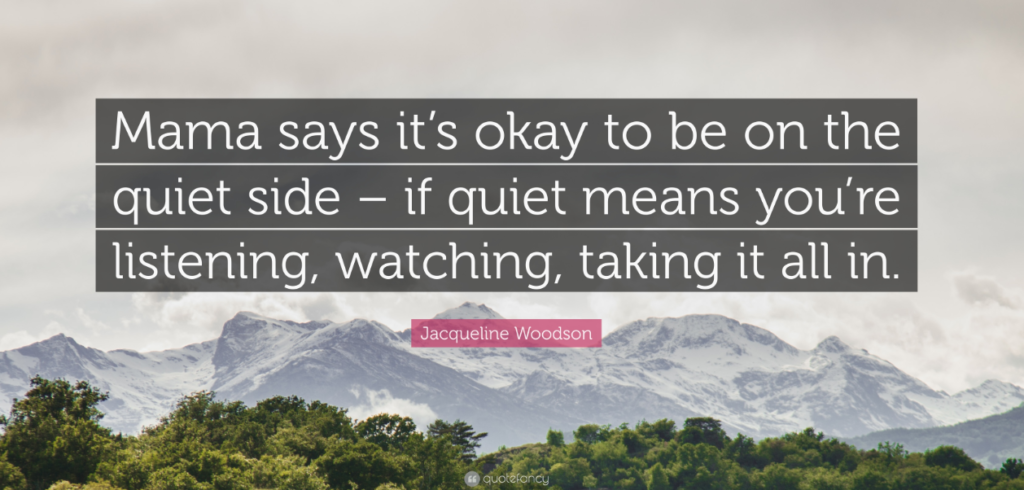
MARK NEPO
“To listen is to lean in, softly, with a
willingness to be changed by what we hear”
A number of years ago a friend with whom I was pursuing a project would remind me, “You need to be all in on this, there is no in-between, you are either all-in or all-out!” Those words have stuck with me ever since. Those who are all-in dedicate themselves to the task at hand. Nothing distracts their focus. They commit and expect no less of those with whom they are engaged. It is a trait to be admired. So here is my question, why should it be any different when we engage in conversation. In other words, are you all-in when you are listening?
As a leader there are many skills that must be mastered, but interestingly, one that receives little attention, and is perhaps one of the toughest to master is listening. Ironic isn’t it? We continually hear that one of a leader’s most important skills is the ability to communicate, however we forget that communication finds its basis in listening.
Most people believe that good listening is:
- Not talking when others are speaking
- Letting others know you are listening through facial expressions (smiling), non-verbal gestures (nodding) and verbal sounds ( Mmmm, uh-huh, yep)
- Being able to repeat what others have said.
While reflective of good manners and a good memory, these actions do not necessarily reflect good listening. The ability to listen effectively begins by being all-in, by being mindful.
The skill of mindful listening is addressed in Laurie Cameron’s August, 2018 post entitled, “How to Give Your Full Attention”. Cameron proposes that by practicing self-awareness we can listen with greater care, and better understand not only the words, but the emotion and meaning being expressed. So what does she mean by this? Think about the last conversation you had with a member of your family, a friend, work colleague, or customer; were you all-in? Did you focus on the words being used, what was being said, the pauses, the nonverbals? Were you distracted in any manner by your phone, thoughts of an upcoming meeting, or the response you were already preparing in your mind? By practicing self-awareness and being cognizant of our own focus, or lack thereof, we are better able to listen and understand those with whom we speak. This skill is called Mindful Listening.
According to Cameron, Mindful Listening – focused attention to what another person is saying, without judging or having a preset agenda or response – is a foundational skill that is rarely practiced. In fact, good-listening rule #2 above can actually serve to compromise our conversations because our verbal behavior can press the speaker to move faster. This continual subtle sense of urgency can actually impede communication. By being mindful, we become more aware of our own interactions and in doing so add value to the exchange for both sides. “The key to mindful listening (being all-in) is to simply notice when your mind begins to wander, and when it does, bring your focus back to the speaker.” (Cameron)
Mindfully listening in a “connected” world is not an easy task. Many pride themselves on their ability to multi-task and all too often this skill is still utilized when we converse and “listen” to another. The phone may be put on silent, but the vibration is kept on. Open offices, pinging, printers, and interruptions from colleagues can challenge our focus. Ironically, what is going on in our own heads may be even more disruptive. A previous conversation, an upcoming meeting, an evening function, or a critical decision that must be made by day’s end can all serve to compromise our focus . In essence, all too often, we are “all-out” when engaging with others. So what can be done?
Mindful listening begins with self-awareness; being cognizant of our own behaviors and actions and being “all-in” to the conversation. It means not only listening to the words we are hearing, but being equally aware of the emotions being expressed. Listening for understanding and meaning, enable us to become “connected” with our speaker. To accomplish this, Cameron recommends five (5) mindful listening techniques:
- Hear Between the Words: Ask yourself: What is this person communicating beyond the words they use? What are they feeling?
- Use Non-Verbals to Indicate Your are Listening: Use nonverbal signals like eye contact (critical), nodding, and/or smiling to let the person know you are listening.
- Notice When Your Mind Wanders: Your thoughts will wander. When you realize that your mind has drifted, let go of the thoughts and return your attention to what is being said.
- Scan Your Body Language: Tuning into your own body can give you valuable information. How do you feel during the conversation. Is there anxiety and tension? Is your chest tight or do you feel relaxed, at peace, and calm?
- Respond With Curiosity: Once you’ve become comfortable at listening mindfully without speaking begin to offer brief verbal comments that express kindness or seek deeper understanding. The key is to focus on the speaker, not you. You might try, “That sounds difficult.” “What happens next?” How did that make you feel?
Being mindful or all-in when we listen is fundamentally different than the approach we often use to communicate. By using mindful listening we can connect with the speaker and ultimately respond with greater wisdom and skill – but only when it is our turn. Are you listening – are you all in?
Embrace the Challenge!
